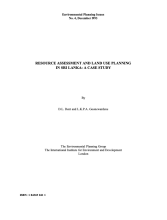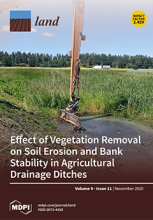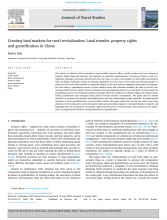/ library resources
Showing items 1 through 9 of 5678.Land administration in Sri Lanka is institutionally and functionally fragmented and geographically incomplete. The current situation is an impediment to spatial planning and land and natural resources management with direct impact to economic growth and social development.
ABSTRACTED FROM EXECUTIVE SUMMARY:
This review does not attempt to be comprehensive. Instead, we highlight:
-
benchmarks in the evolution of land use policies in Sri Lanka;
Amid climate change, biodiversity loss and food insecurity, there is the growing need to draw synergies between micro-scale environmental processes and practices, and macro-level ecosystem dynamics to facilitate conservation decision-making.
Street trees, native plantings, bioswales, and other forms of green infrastructure alleviate urban air and water pollution, diminish flooding vulnerability, support pollinators, and provide other benefits critical to human well-being.
In West Africa, where the majority of the population relies on natural resources and rain-fed agriculture, regionally adapted agricultural land-use planning is increasingly important to cope with growing demand for land-use products and intensifying climate variability.
The disparity in land and food access in Ghana often overlooks the possibility of an underlying gender disparity.
Green infrastructure (GI), as a concept and as a tool for environmental land-use planning at various scales, has burst onto the academic, political, and policy-making scenes in the last two decades.
Land is one of the important input resources in a highly populous and land-scarce country such as Bangladesh. When different factors change (such as, geophysical, proximity, socioeconomic and climatic), there are dramatic changes in the spatial pattern of land uses.
The reform of collective land ownership in post-socialist contexts offers a useful window into how changes in property rights shape and structure the dynamics of territorial transformation.
Paginación
Land Library Search
Through our robust search engine, you can search for any item of the over 73,000 highly curated resources in the Land Library.
If you would like to find an overview of what is possible, feel free to peruse the Search Guide.






